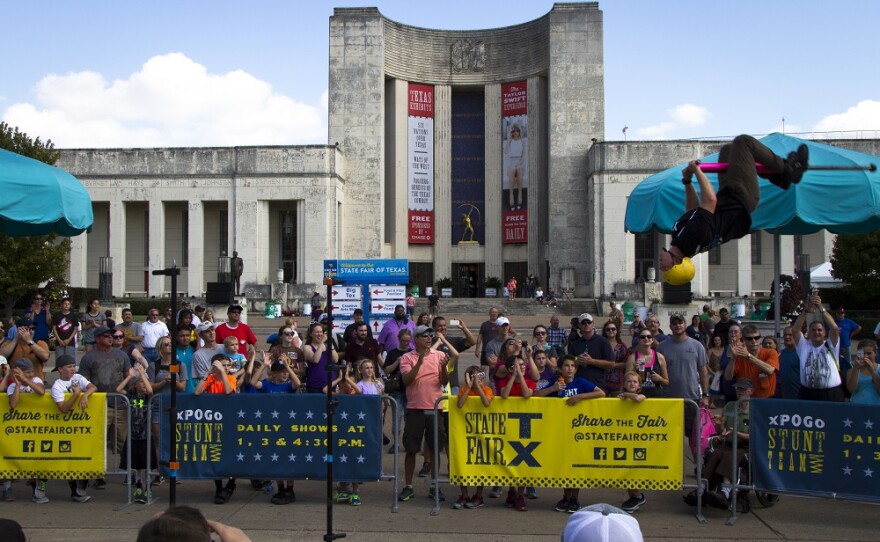There’s a lot to gawk at at the State Fair of Texas. A 55-foot-tall cowboy, towering cones of cotton candy, flashing midway rides that defy gravity. This year, a handful of guys on pogo sticks do that too.
Three times a day, the Xpogo demo team does everything from back flips to 7-foot bounds over a limbo pole. It looks cool, sure. The biomechanical breakdown of what these athletes are actually doing is even cooler.
Defying gravity on pogo sticks
The Xpogo athletes can pull off tricks most of us would never attempt. Jumps with no hands, jumps with no feet. Black flips, front flips and sky-high leaps over obstacles.
Bryan Pognant has been involved in extreme pogo-sticking for 15 years. He says the key to getting tricks down isn’t strength, it’s…
“Balance, always balance," he says. "We have 13 year olds jumping like 10 feet, and that’s only because they know how to balance.”
Watch Pognant perform a trick called the ‘no foot peg grab’ with scientific analysis from SMU professor of physiology and biomechanics Peter Weyand.
https://www.youtube.com/watch?v=BRV-Lq4dwCw&feature=youtu.be
Finding your center
And science backs that up, says Weyand.
“So if your body isn’t perfectly over the center of that pogo stick, it’s going to send you off in one direction or another and there’s less room for error when you come in from a really high height that’s going to result in big forces on the ground," he says.
And there are plenty of high heights in the State Fair Xpogo demonstration, thanks in part to the gear they’re riding. The guys start their show with some basic tricks on traditional spring-powered sticks-- but, Weyand explains, those just don’t go very high.
“The spring on those pogo sticks is going to bottom out pretty quickly," he says.

Upgraded gear
So the Xpogo guys primarily use pneumatic pogo sticks—that bounce on a cushion of highly compressed air. They can handle a lot more force which means they can carry their riders higher and higher with each bounce. Up to 10 feet in the air. Bryan Pognant says getting comfortable with the bounce is the key to every trick.
“It’s really all muscle memory so if you can train for it and have it down pat, you can go months and then pull out a back flip out of nowhere.”
That doesn’t surprise scientist Peter Weyand.
“Not to say that what they do doesn’t have any conditioning or rigorous element, but it’s not the most important thing. It’s not as taxing as running a four minute mile, say. They’re much more like gymnasts or acrobats," he says.
And just like an acrobat, the pogo stick athlete has to be precise—specifically on the bounce.
“Once they leave the ground, their body’s trajectory is entirely set," he says. "So they know where they’re going to land and it’s just a matter of getting the stick down in the right place before they come back down again.”
The intangibles
So technical skill is really important. But so is a love of the game. Just listen to how Bryan Pognant describes a trick called a “no-foot peg grab.”
“It’s one of my favorites because it’s just a fun thing to do. You pull the stick up, you slap the pegs and you bring them back to your feet," he says. It’s a motion of all your body and it’s just a good way to throw yourself and the stick around in the air.”
And that’s what the crowd is into. Not the precision or the biomechanical greatness. It’s the guys throwing themselves and their pogo sticks around in the air.








